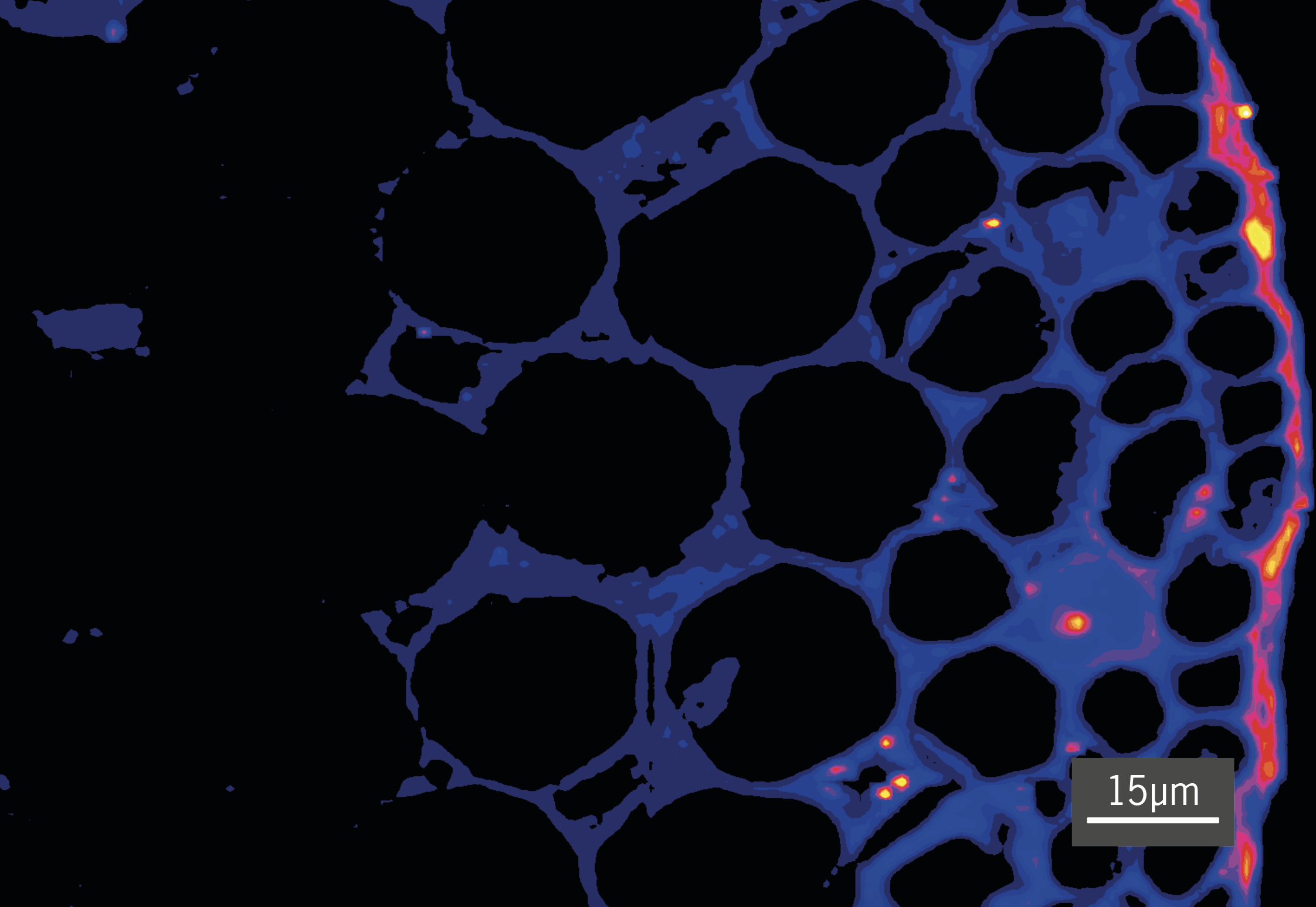Aluminium toxicity, therefore, has a negative impact on food production in these areas. In Australia, for example, soil acidity costs $1.5 billion per year in forgone agricultural production. With the global population exploding, it is imperative that more food be produced from these soils.
For the past 110 years, it has been known that aluminium decreases root growth, although the mechanisms for its toxicity have never been identified until now. In the AMMRF (now Microscopy Australia) at the University of Queensland, ARC Future Fellow Dr Peter Kopittke, with the expert help of Mr Rick Webb and Dr Kathryn Green, carefully prepared root samples to elucidate how aluminium affects root growth. Dr Kopittke used sensitive characterisation approaches, including a beamline on the Italian Synchrotron, accessed through the Australian Synchrotron via the International Synchrotron Access Program. This allowed him to demonstrate that aluminium accumulates in roots within only minutes of exposure to the heavy metal. Combined with high-resolution analyses over time, molecular biology and flow studies, Dr Kopittke and his colleagues have been able to show, conclusively, that aluminium binds very strongly to the cell walls and, within five minutes, stops them expanding, blocking root growth.
This is the first step towards finding a solution to aluminium accumulation and increasing global food production from nearly half of the world’s arable soils.

A microscopic map collected using the Italian Synchrotron (ELETTRA), showing the levels of toxic aluminium in roots of soybean. Highest levels are shown in yellow.
October 24, 2014